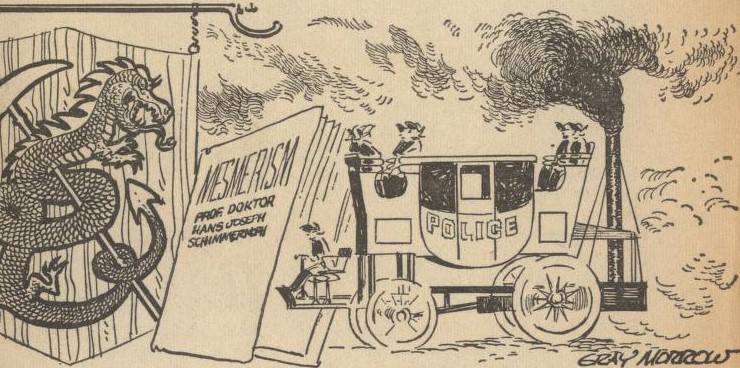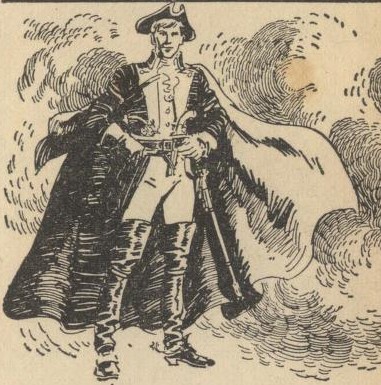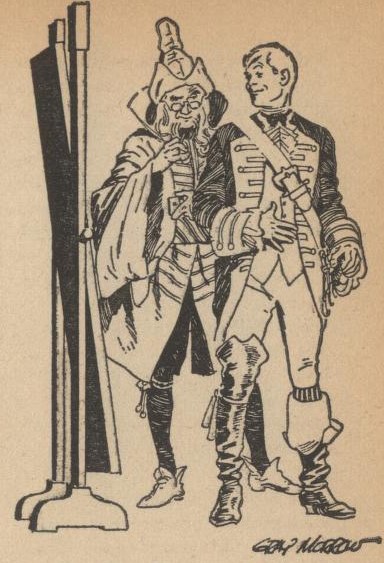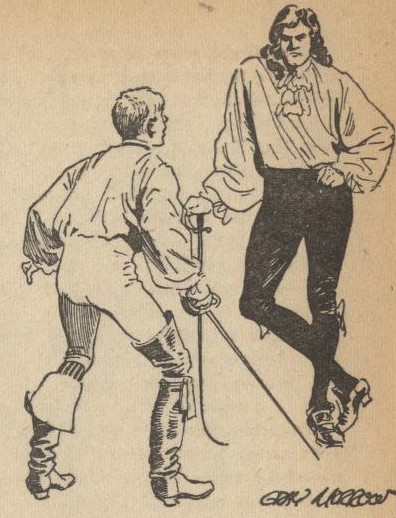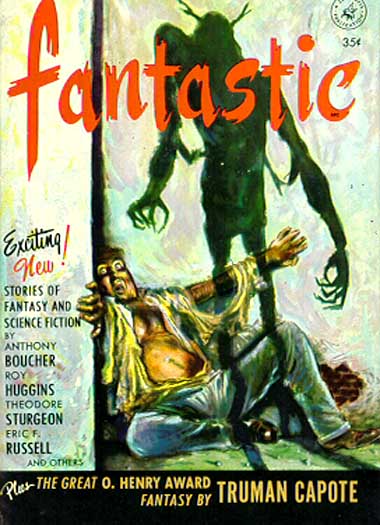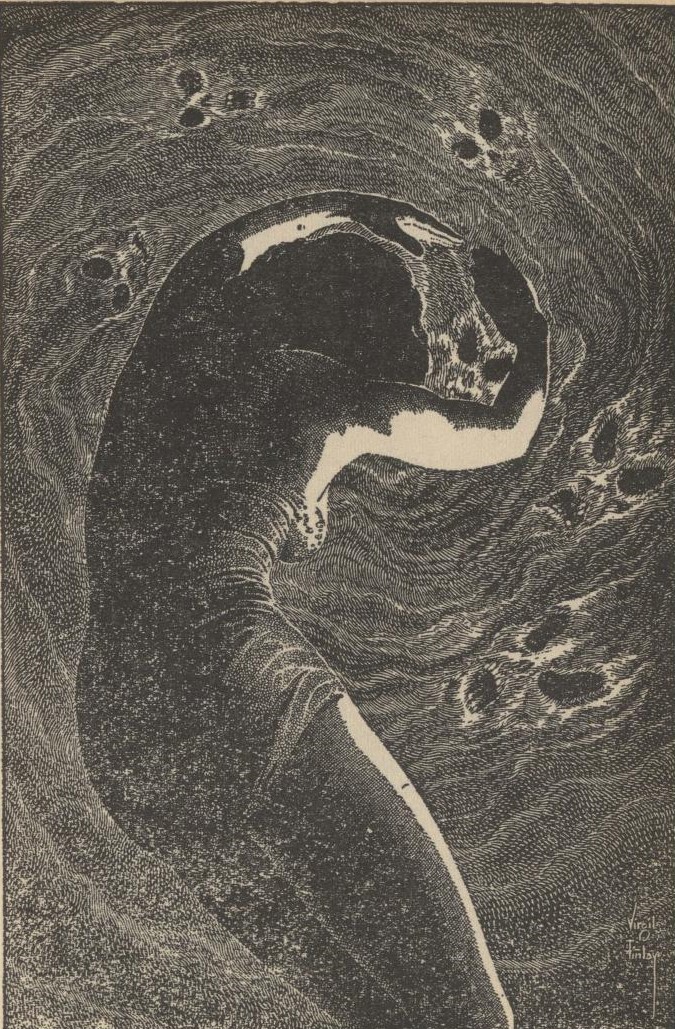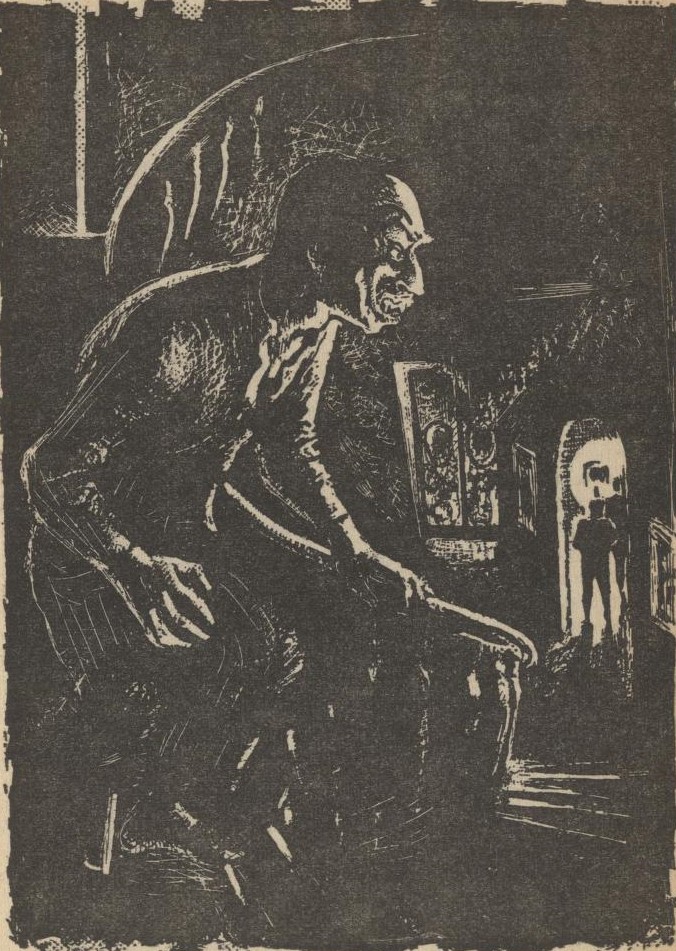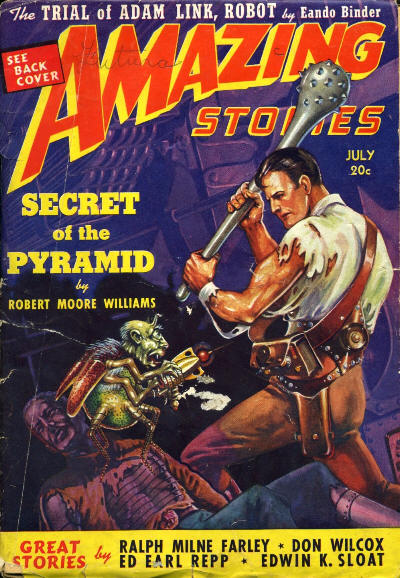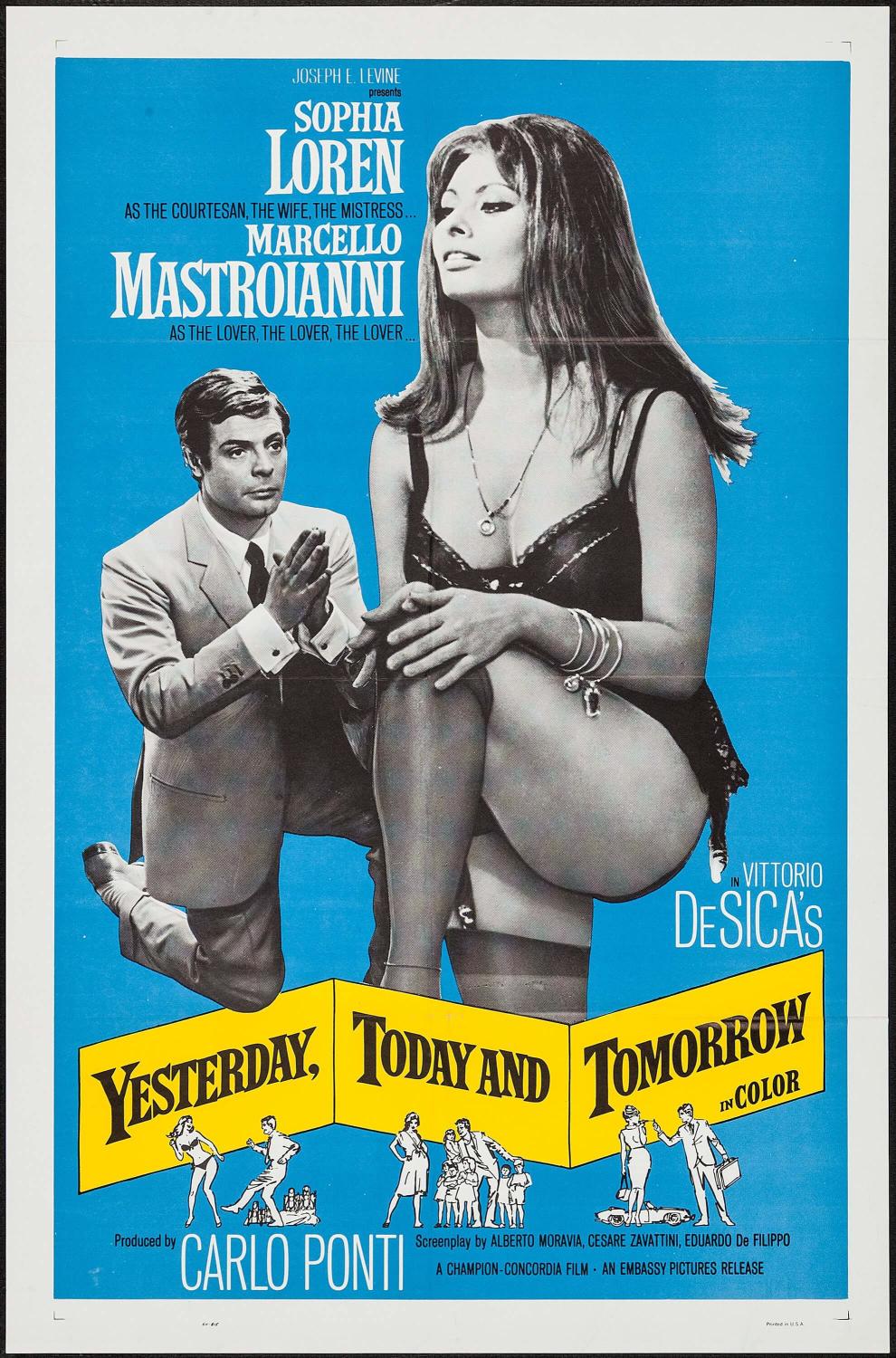
by Victoria Silverwolf
I Heard It Through The Grapevine
I trust that singer Martin Gaye will forgive me for stealing the title of his current smash hit, which has been at the top of the American pop music charts since last month, and shows no signs of disappearing soon. (Gladys Knight and the Pips had a big hit with it not much more than a year ago, too.)
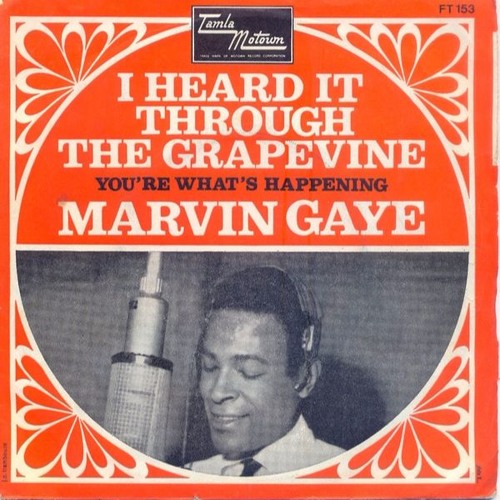
He's what's happening.
The reason for my musical theft is that certain information about the authors of the stories in the latest issue of Fantastic reached me through informal channels.
Open your ears, for which of you will stop
The vent of hearing when loud Rumor speaks?
— Henry IV, Part 2
I'll explain when the time comes. Meanwhile, let's take a look at a very mixed bag indeed.
(OK, I'll apologize to the Beach Boys as well.)
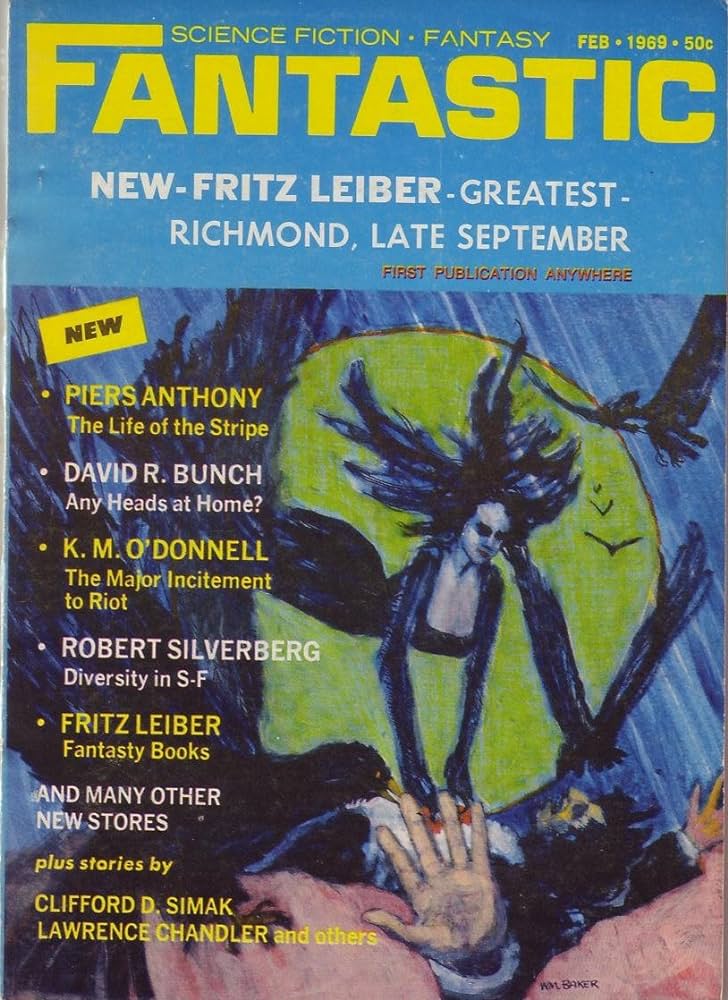
Cover art by William Baker.
Wow! A new piece of art on the cover. The grapevine tells me editor Barry N. Malzberg is shaking things up at Fantastic.
The editorial by Robert Silverberg, the magazine's new associate editor (so long, former-editor-turned-associate-editor Harry Harrison), makes the case that there's plenty of room in the world of imaginative fiction for both Old Wave and New Wave. Hear, hear.
This issue, which contains ten new stories as well as four reprints, should prove an excellent test case for his thesis. We've got old-fashioned yarns as well as experimental works.
First of all is a new tale from an author who bridges the gap between the opposing Waves. (Don't try to tell me his 1950 story Coming Attraction isn't a Dangerous Vision!)
Richmond, Late September, by Fritz Leiber

Illustration by Bill Baker.
Near the end of his life, Edgar Allan Poe encounters a mysterious, beautiful woman with whom he becomes obsessed. Their conversation suggests that Poe has a premonition of the coming American Civil War. The conclusion hints at the woman's true identity.
As you'd expect, this is elegantly written. Leiber obviously knows and loves the works of fellow fantasist Poe. The story is full of references to Poe's tales and poems. (Some might say too many.) The denouement is nicely subtle.
It's not a major piece (calling it Fritz Leiber's Greatest Short Story in the table of contents is hardly accurate) but well worth reading. High three stars or low four stars? I'm prejudiced in favor of both Poe and Leiber, so let's go on the high end.
Four stars.
Any Heads at Home?, by David R. Bunch
Hollywood used to call actor/director Erich von Stroheim The Man You Love To Hate, because of his many villainous screen roles. The controversial works of David R. Bunch, back when the magazine was edited by Cele Goldsmith (later Cele Lalli), made him The Writer You Love To Hate in the eyes of many conservative readers. He's back in form here.
The insane narrator (shades of Poe!) relates how he took the head of his dead, filthy rich boss out of his grave so he could kick it around. A visit from the police isn't the only thing he should worry about.
The bare bones (pun intended) of the plot make it sound like an ordinary horror story. What makes it unusual is the author's unique style. His familiar quirks are here. Certain words are printed in ALL CAPITALS, often with EXCLAMATION POINTS! Bunch uses hyphens to create new words like leather-cloppy and stone-feather. The whole thing seems to be written in a frenzy.
Whether you like this stuff or not is a matter of taste. I think it's fairly effective.
Three stars.
Bathe Your Bearings in Blood!, by Clifford D. Simak
After that bit of New Wave, we go back to the Old. This story from one of the greats comes from the December 1950 issue of Amazing Stories.

Cover art by James B. Settles.
A newspaper man finds out his alarm clock and watch are both an hour fast. Just an odd coincidence? Maybe, but then there's the guy who calls the newspaper to report a sewing machine moving down the street by itself. Not to mention the rat-like machines hiding in the newspaper office, and the fact that the protagonist's typewriter prints out messages to him.
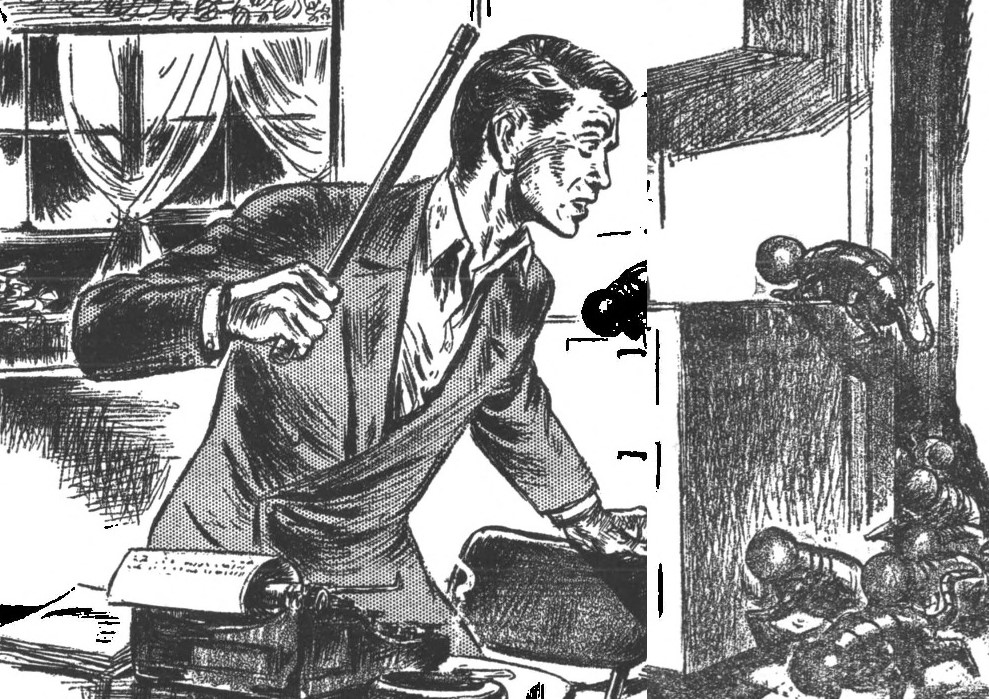
Illustration by Leo Summers.
The grapevine tells me this story has already been reprinted quite a few times, under the less melodramatic title Skirmish. The premise may remind you of the Twilight Zone episode A Thing About Machines. It's not bad, but it stops right at a dramatic moment, leaving things unresolved.
Three stars.
Back we go to new stuff; no less than half a dozen brief yarns before it's reprint time again. (Note that these six stories lack any illustrations. Maybe most of the art budget was blown on the cover.)
All in the Game, by Edward Y. Breese
An unscrupulous fellow finds himself in an extremely luxurious afterlife. His every desire is satisfied. There's a twist.
Sound familiar? Then you've seen another episode of Twilight Zone, namely A Nice Place to Visit. At least Simak has the excuse that he came first!
Two stars.
The Castle on the Crag, by P. G. Wyal
The previous story was new, but very traditionally narrated. This one is not. It starts like a satiric fairy tale (we're told that a princess is a White Liberal, and thus values poverty above all else) but then it jumps forward multiple centuries at a time, in several brief sections of text. A tree grows out of the dead body of the princess, an abbey is built on the ruins of her castle, etc. It builds up to a modern horror.
The point seems to be that nothing is permanent. This is a strange, dark story with a couple of remarks about religion that may raise some eyebrows. Not exactly pleasant reading, but interesting.
Three stars.
The Major Incitement to Riot, by K. M. O'Donnell
The grapevine tells me K. M. O'Donnell is actually editor Barry N. Malzberg. This surreal yarn consists of multiple conflicting versions of what caused violence to break out during the display of the gigantic death mask of a deceased official.
Weird stuff. Don't ask me what it means. The image of the huge mask is haunting, if nothing else.
Two stars.
The Life of the Stripe, by Piers Anthony
The army is running out of the stripes they use to designate rank. A sergeant is busted down to buck private so his can be reused. After his death, everybody who wears the stripe comes to a bad end. Is there a way to end the curse?
Not much to this beyond the premise. As military satire, it's not exactly Catch-22.
Two stars.
Slice of Universe, by James R. Sallis
As far as I can tell, this story involves a couple of aliens who speak in a complicated, song-like manner because they have multiple tongues. Their starship is operated, in some manner or other, by self-pitying, homesick birds. They explore the universe to its very end.
That's a very poor synopsis, because this piece is more of a dream-like prose poem than anything else. As such, I found it intriguing, if a little confusing. The aliens are really alien, that's for sure.
Three stars.
Reason for Honor, by Robert Hoskins
After World War Three, a couple of soldiers are the only ones left out of their unit. They see enemy troops approach. The encounter leads to an ironic conclusion.
Pretty grim stuff. Effective enough for what it is.
Three stars.
The Closed Door, by Kendall Foster Crossen
Back to reprints. This one comes from the August/September issue of Amazing Stories.

Cover art by Gaylord Walker.
The grapevine tells me that the author's first name, despite the way it is spelled in the original magazine and in this reprint, is actually supposed to be Kendell. Gotta watch those vowels.
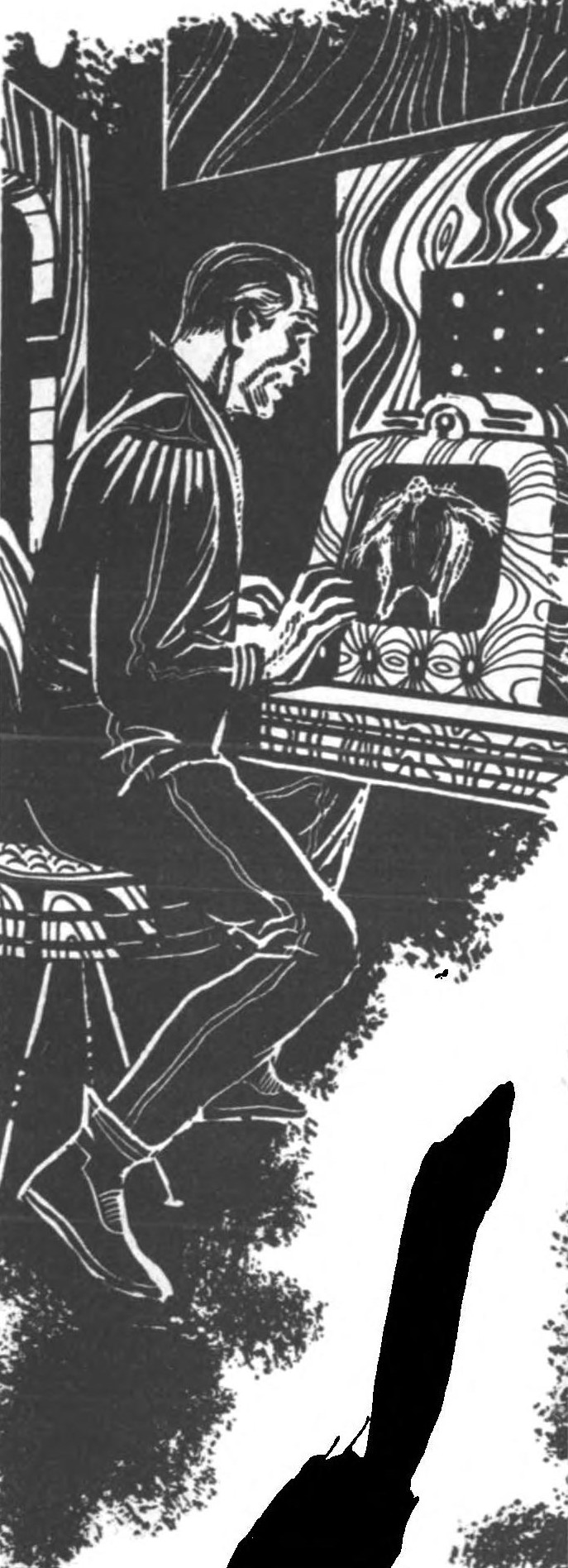
Illustrations uncredited.
Anyway, what we have here is a futuristic locked room mystery. The detective even mentions Gideon Fell, a fictional solver of such mysteries created by author John Dickson Carr.

Whodunit?
A humanoid alien is murdered in his hotel room, despite the fact that the door can only be locked or unlocked by his hand. Does a torn piece of paper bearing the letters COO hold the key to the crime?
Boy, this is a lousy story. It fails as science fiction and as a mystery. The solution depends on things the reader can't possibly know. Give me Lije Baley and R. Daneel Olivaw any day in the week.
One star.
The Origin of Species, by Jody Scott Wood
We interrupt our reprints for a couple of new pieces. (Again, no illustrations.)
Less than a page long, this one takes the form of a tirade by a tree-dwelling ape against those radicals who are walking on the ground and doing other outrageous stuff.
A satire about the previous generation (Old Wave?) complaining about those darn kids nowadays (New Wave?), I suppose. Whatever.
Two stars.
Grounds for Divorce, by Robert S. Phillips
A man goes to a lawyer asking to divorce his wife. It seems the fellow isn't satisfied with his sex life, compared to the images he sees of the old days.
You'll probably see the twist coming a mile away. A mildly Dangerous Vision.
Two stars.
This Planet for Sale, by Ralph Sholto
The pages of the July 1952 issue of Fantastic Adventures supply this space opera.

Cover art by Walter Popp.
A couple of guys are in their spaceship, smuggling valuable cargo. Meanwhile, a father and daughter are in another spaceship. The two vessels run into an invisible planet that made its way into the solar system.

Illustration by Ernie Barth.
The daughter (in true science fiction fashion, this young adult woman is always called a girl) gets captured by the bad guy. The smuggler-turned-hero rescues her.
It all has something to do with the bad guy's plan to wipe out the indigenous population of the invisible planet and transport it somewhere else, in order to sell it to aliens. The bad guy also wants to do the same thing to Earth.
Pretty bad stuff. Nonsensical science, thud-and-blunder action. The nature of the smuggled cargo (kept concealed from the reader) solves everybody's problems (expect the bad guy, of course.)
One star.
The Day After Eternity, by Lawrence Chandler.
Another action/adventure yarn, this time from the February 1955 issue of the magazine.
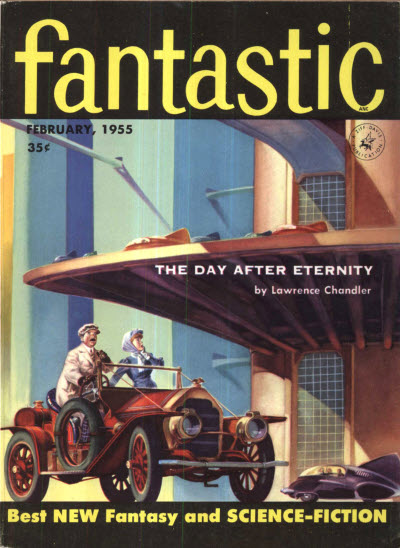
Cover art by Henry Sharp.
The grapevine tells me that Lawrence Chandler was a house name (pseudonym shared by more than one writer.) Might be Howard Browne, might be Henry Slesar, might be somebody else. The grapevine doesn't know everything.
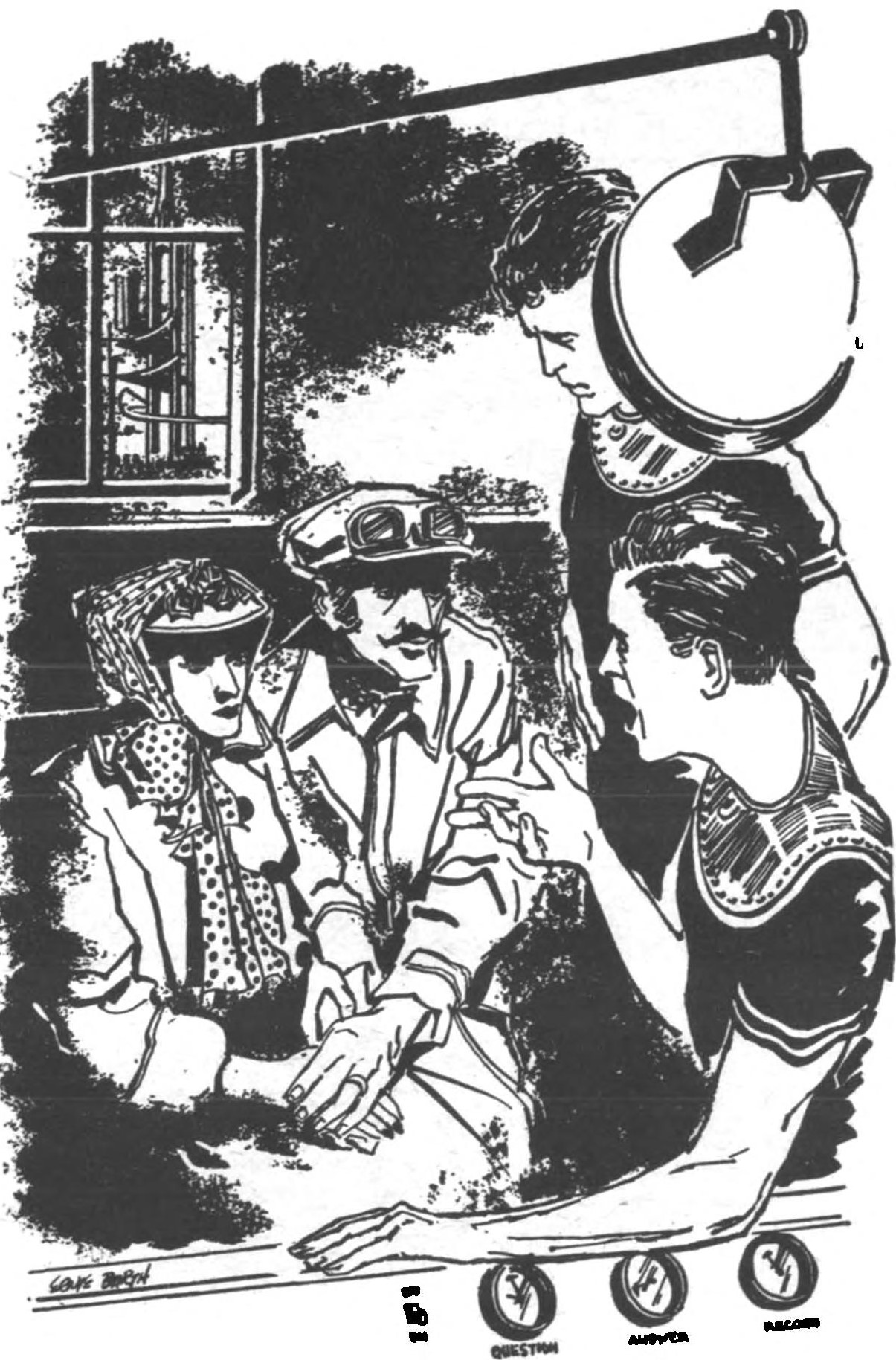
Illustration by Paul Lundy.
Another wandering planet comes into the solar system. This one seems to be stealing Earth's water. (Forget that. It has nothing to do with the plot.) Our manly hero and his manly buddies, plus a whole bunch of cannon fodder from other planets, set out to defeat the thing.
A telepathic psychiatrist comes along, because she's figured out that the planet is actually stealing minds. The cover illustration, for which the story was probably written, depicts a scene in which one of the buddies, who loves old cars, gets tricked by an illusion and blown up.
(At this point, I was reminded of Ray Bradbury's 1948 story Mars is Heaven!, which is much better.)
Everybody gets killed except the hero and the (ahem) girl. They bicker at first, but of course they wind up in love.
Two rotten old stories in a row. This one adds insult to injury by emphasizing the fact that the psychiatrist is old-fashioned because she doesn't expose her breasts.
One star.
Sour Grapes
There were some real stinkers in this issue, particularly the reprints from lesser known writers. Not all the new stuff was worthy either.
The grapevine tells me that Malzberg isn't happy with the magazine's reprint policy. Did he deliberately choose losers to make his point? The rumor mill also suggests that he won't be around long.
There were some decent stories here — it's hard to throw fourteen darts and not hit the target sometimes — but you might want to spend some time watching an old movie on TV instead.
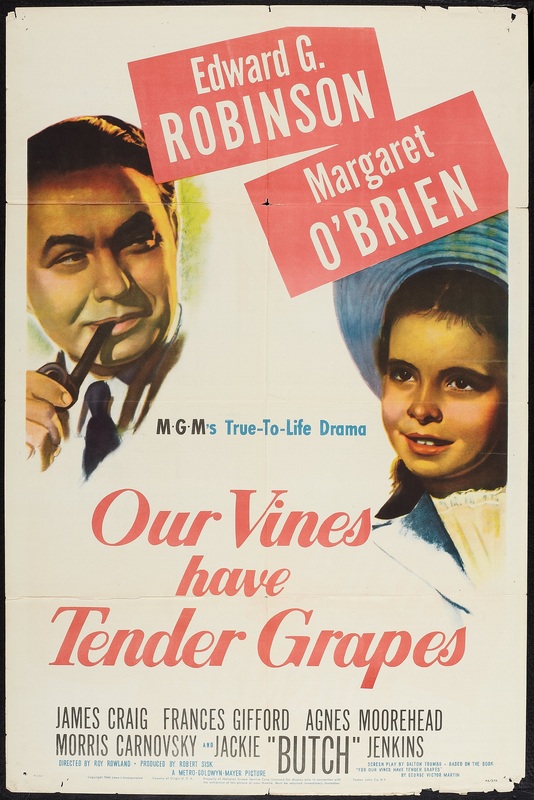
This one is pretty good.

![[January 8, 1969] Young Punks and Old Fogies (February 1969 <i>Fantastic</i>)](https://galacticjourney.org/wp-content/uploads/2024/01/690108cover-672x372.jpg)


![[March 14, 1967] Family Matters (April 1967 <i>Amazing</i>)](https://galacticjourney.org/wp-content/uploads/2022/03/amazing-apr-1967-cover-489x372.png)

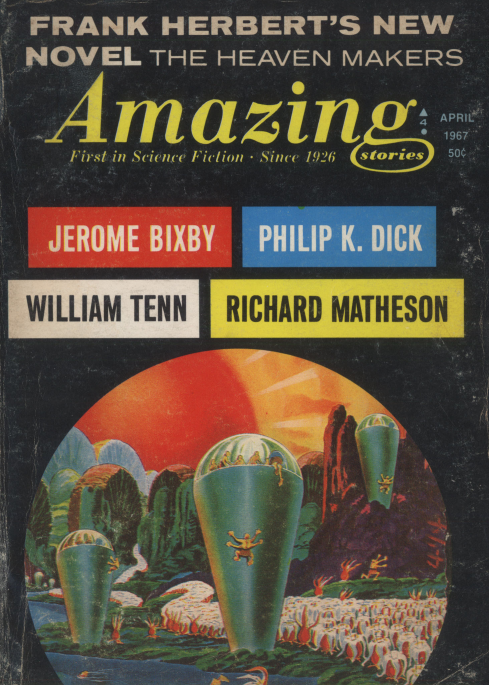


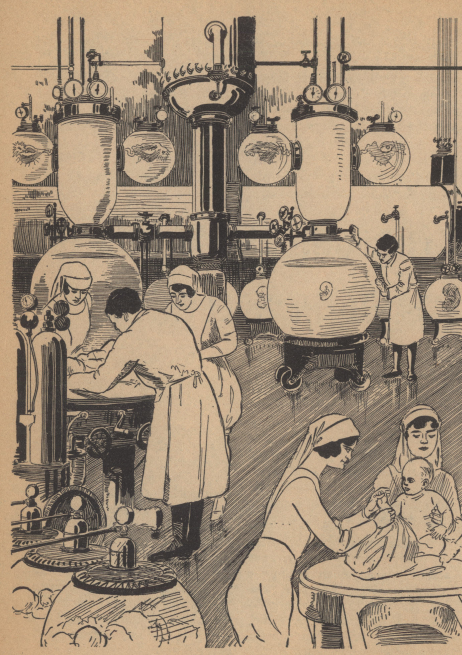

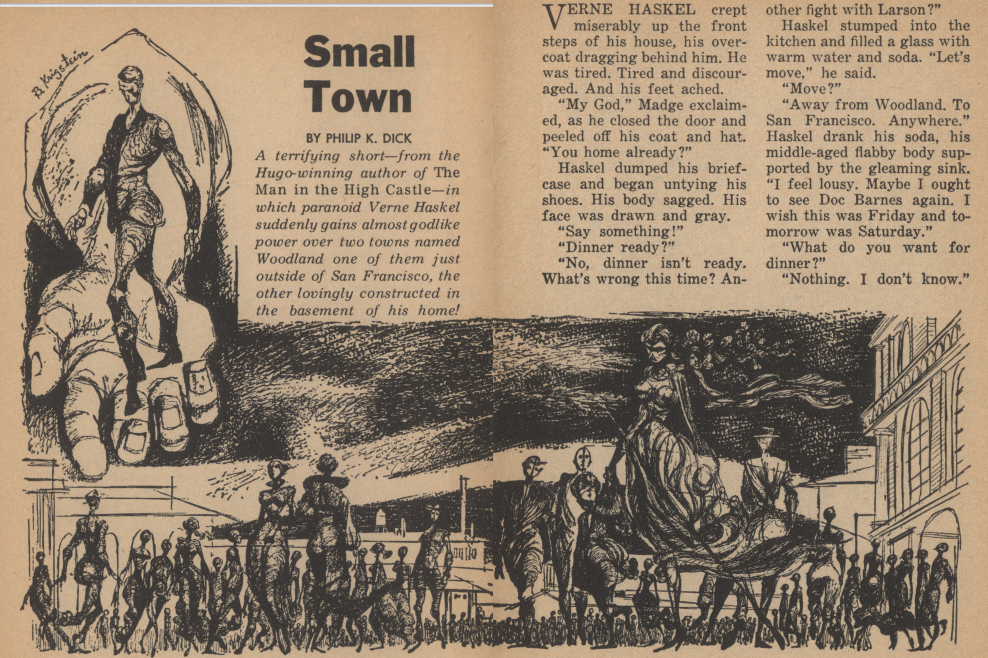
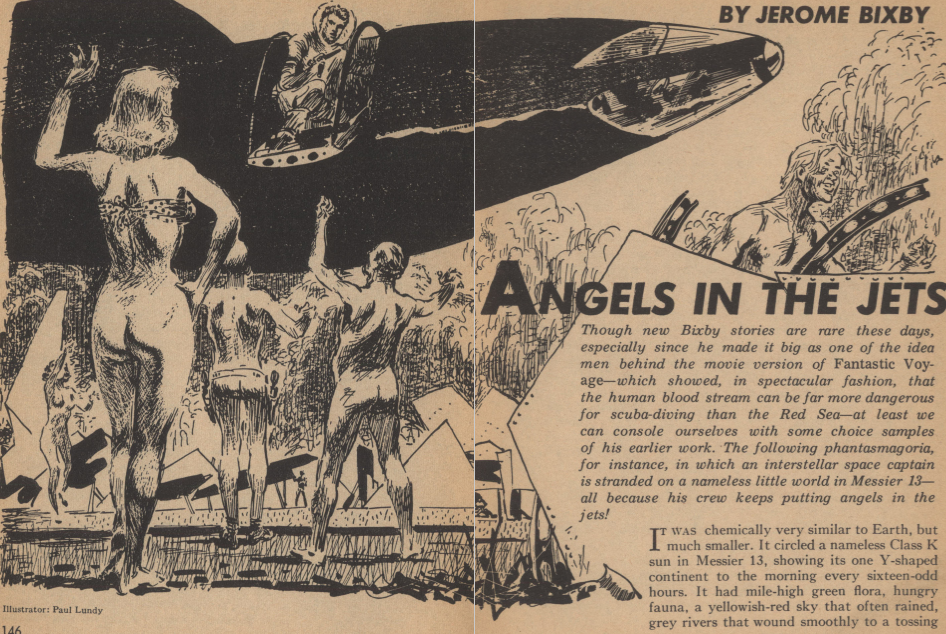
![[October 22, 1965] Yesterday, Today, and Tomorrow (November 1965 <i>Fantastic</i>)](https://galacticjourney.org/wp-content/uploads/2020/10/Fantastic_v15n02_1965-11_Lenny_Silv3r_0000-2-672x247.jpg)





